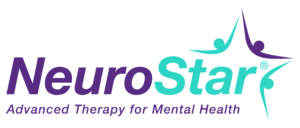TMS stands for Transcranial Magnetic Stimulation. It is also referred to as rTMS, or repetitive TMS. TMS is a noninvasive treatment for severe, treatment-resistant depression (Major Depressive Disorder which has not been significantly improved despite multiple trials on antidepressants in multiple classes, often in addition to one or more rounds of psychotherapy). Antidepressants are only effective about 50% of the time, and in addition, can cause side effects such as weight gain, loss of libido, ED, decreased orgasm or other sexual side effects, drowsiness, and pregnancy risks.
TMS is administered in a special chair, the operative component being a powerful, MRI-strength magnetic coil which emits repetitive pulses of electromagnetic current into the region of the brain involved with mood control and depression. It is thought to activate regions of the brain where there is sluggish or dormant neuronal (nerve cell) activity in depression. After an initial session where the magnet is “aimed” at the proper region by a psychiatrist (or in some cases a psychiatric nurse practitioner) and the exact coordinates and appropriate magnetic strength are stored in a computer, the treatment sessions can be administered by a trained paraprofessional. TMS usually involves about 30 sessions (typically 5 days per week for 6 weeks).
Prior to the FDA approving TMS around 2009, the treatment of choice for severe, treatment-resistant depression was Electro-Convulsive Therapy (ECT). As opposed to electromagnetic current as with TMS, ECT uses actual electrical current to induce a seizure, that lasts about 60 seconds. The patient is sedated and given an IV muscle relaxant to minimize the intensity of the convulsions. ECT, through the seizure, is thought to beneficially “reset” the brain and alter the brain chemistry and physiology, such that depressive symptoms are steadily reversed. It is usually administered in courses of 10-12 sessions at a time, 2-3 times per week. Often, the first 2-3 treatments are given with the patient in the hospital. When done on an outpatient basis, because of the sedation, the patient must be driven home from sessions, requiring about 3 hours, including time in recovery.
TMS involves no sedation, and the treatment sessions usually last 20-30 minutes. The patient is given ear plugs to dampen the loud clicking noise of the repetitive electromagnetic pulses. During the treatment, there is a sense of tapping on the head. During TMS, the patient can listen to music, watch TV, or even talk to the paraprofessional. There is no recovery time, and the patient can drive home or return to work after treatment.
Both TMS and ECT have been heavily researched, and found to be very effective treatments for severe, treatment-resistant depression. TMS is more convenient, as all the treatments are outpatient (as above, ECT often begins in the hospital), and because the TMS patient can drive themselves to all the treatments, and back to work if desired. Side effects are not a significant issue with either TMS or ECT. With TMS, the most common side effects are scalp irritations and headaches, but these usually subside within the first week. With ECT, patients often experience headaches and muscle aches, as well as foggy-headedness and some short-term memory loss, but these both improve within 2-6 weeks of terminating the ECT treatments. Furthermore, regarding the memory loss with ECT, most severely depressed patients report that they do not mind not being able to remember all of what they have been experiencing (as it has tended to be so overwhelmingly sad, dark, and hopeless). ECT is more expensive than TMS (about $25K for a full course of treatments, as opposed to about $15K for a full course of TMS), but most insurances cover both ECT and TMS.
ECT is likely the best option for patients that are actively suicidal, as it tends to work more quickly. (Waiting six weeks while trying TMS would involve more risk for suicide.)
The vast majority of the time, neither TMS nor ECT is a complete or final cure for one’s depression. Usually the TMS or ECT patient will continue antidepressant medication (perhaps fewer medications and/or at a lower dose, or where they experience more benefit from the same dose). Additionally, the patient may find that psychotherapy is more beneficial after TMS or ECT, thus continuing the latter is usually a good idea. Both with TMS and ECT, occasional maintenance sessions are sometimes needed to prolong remission.



